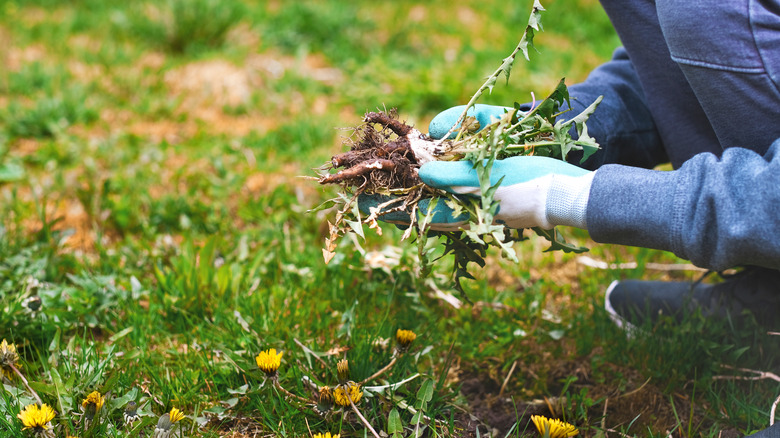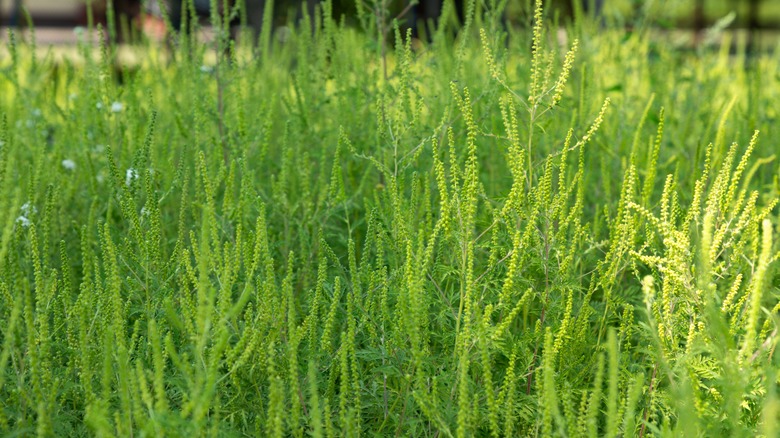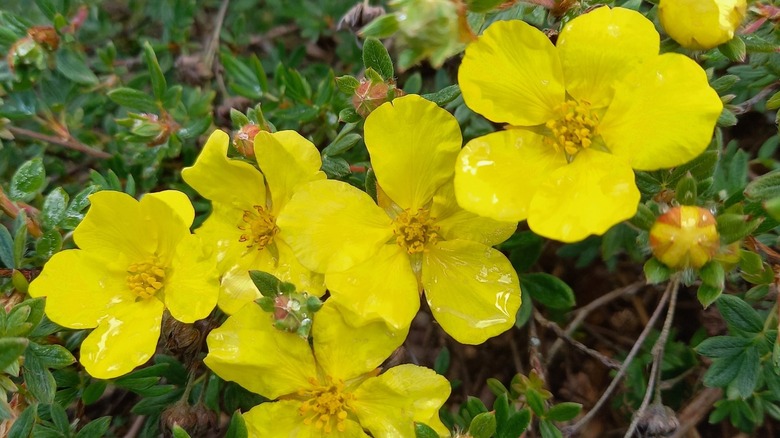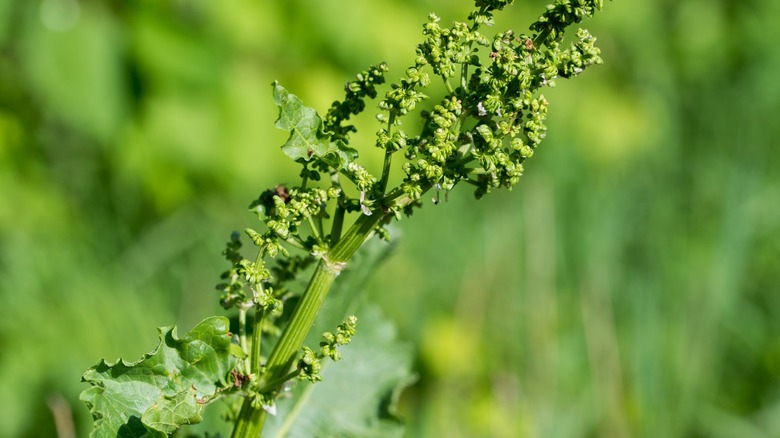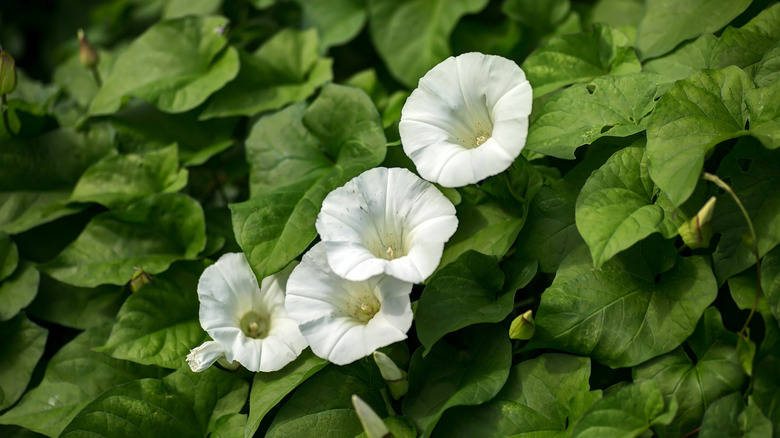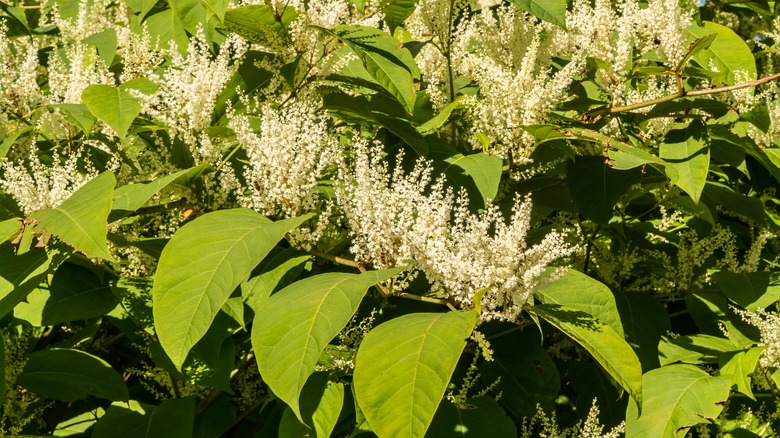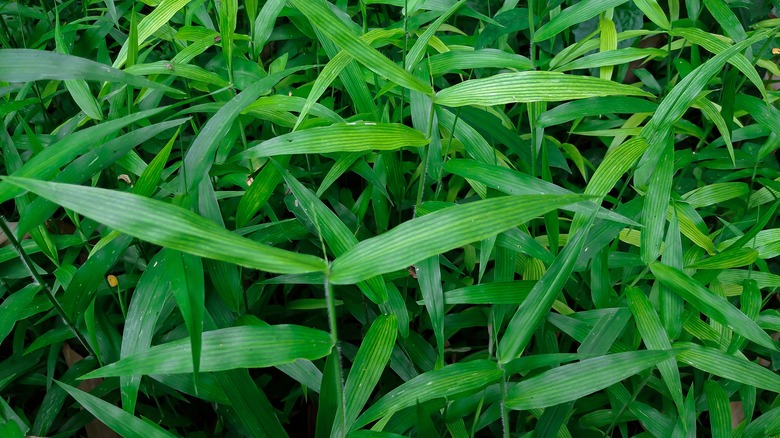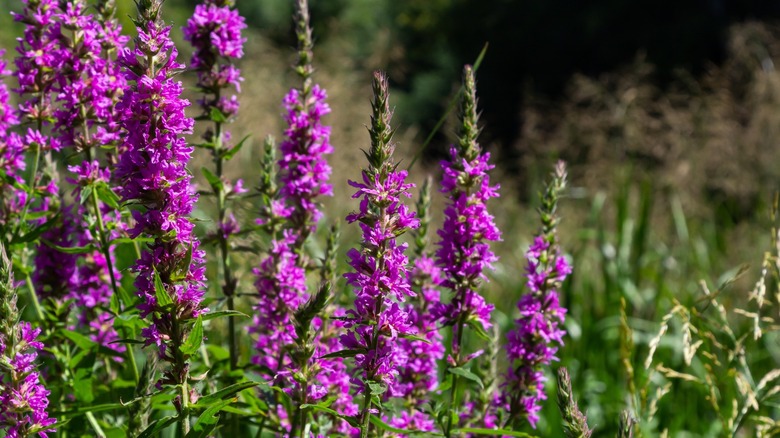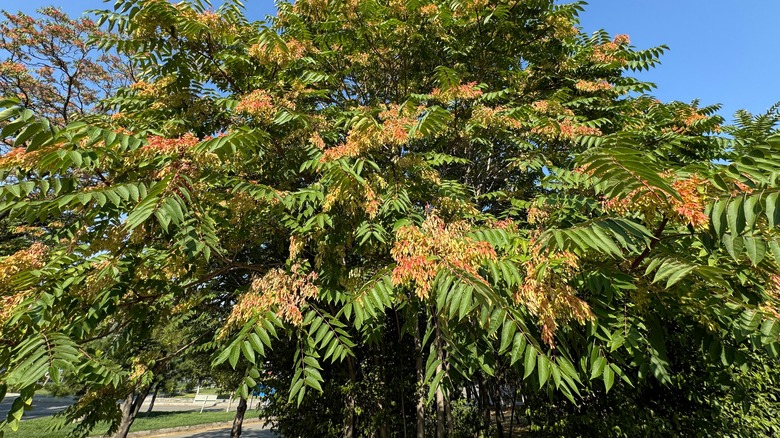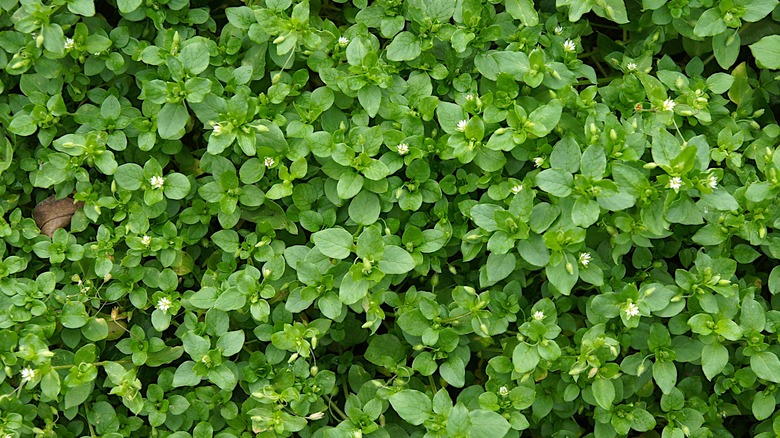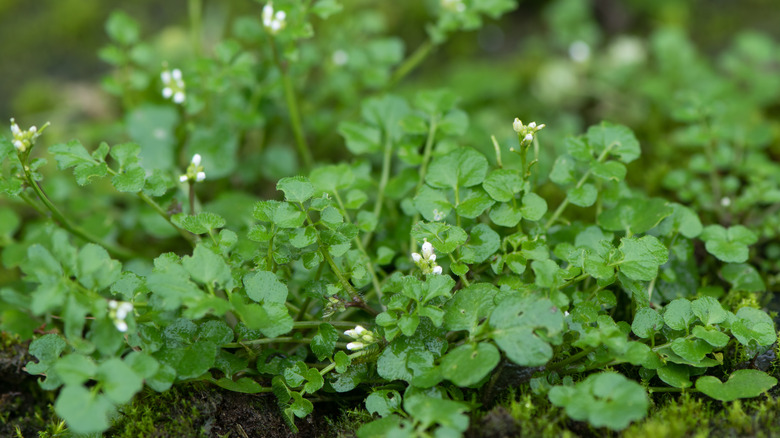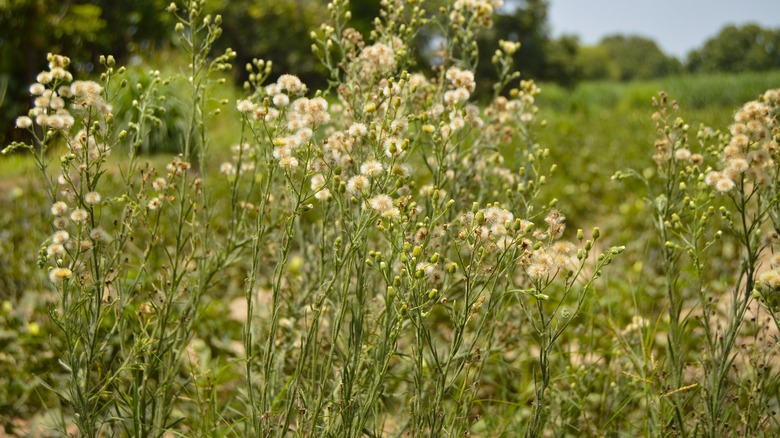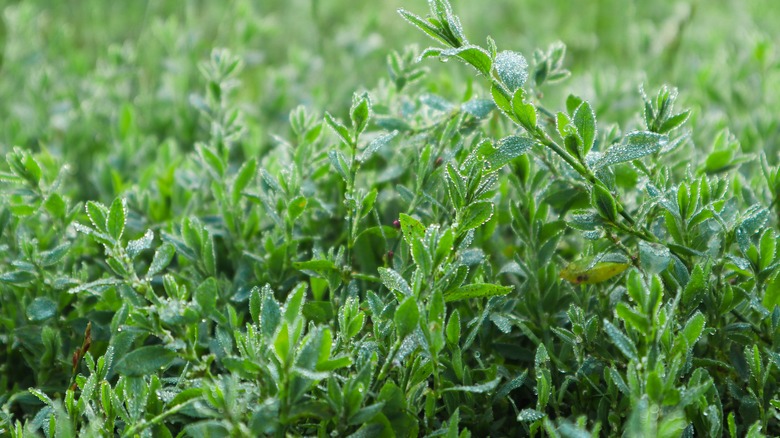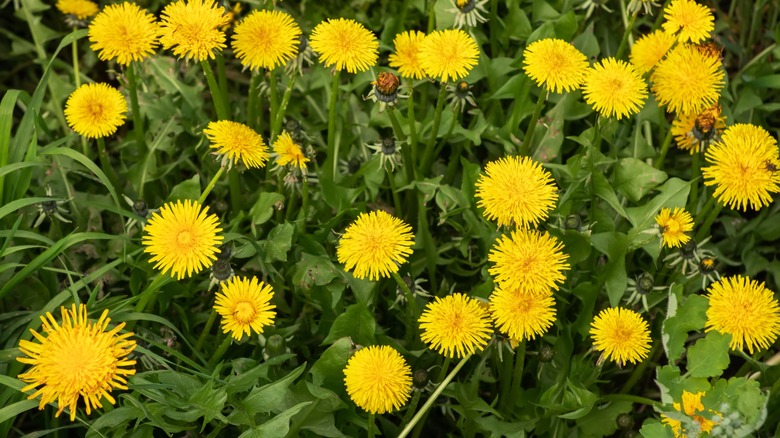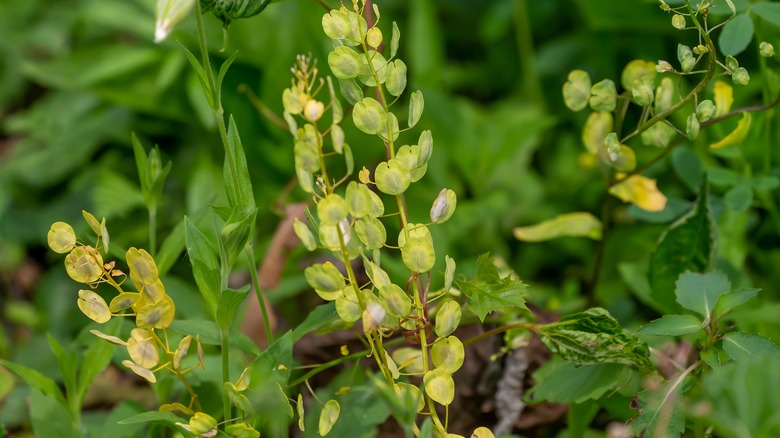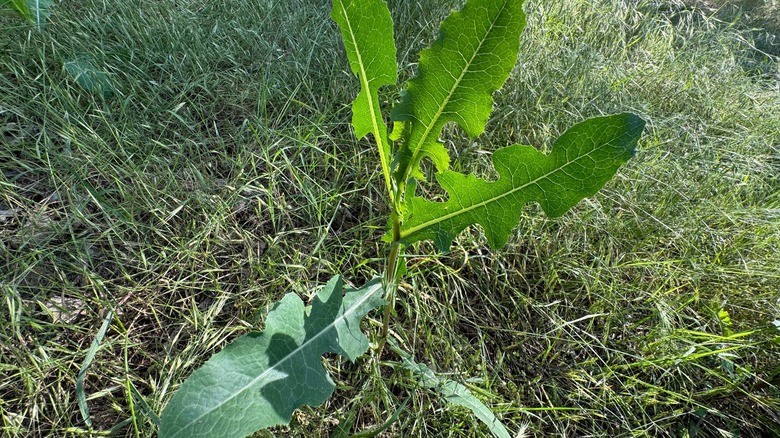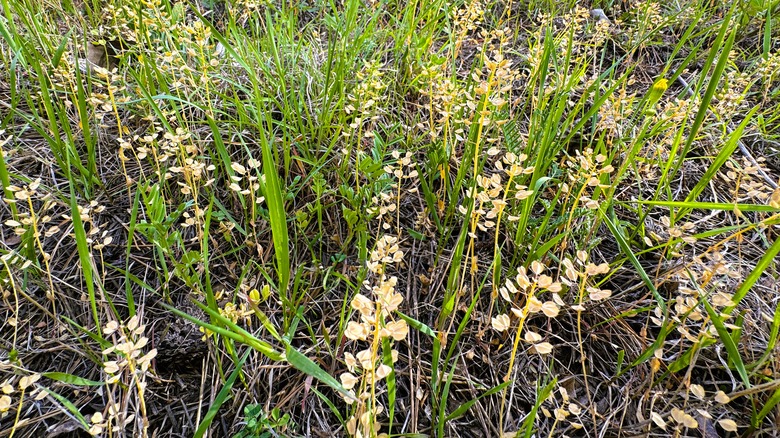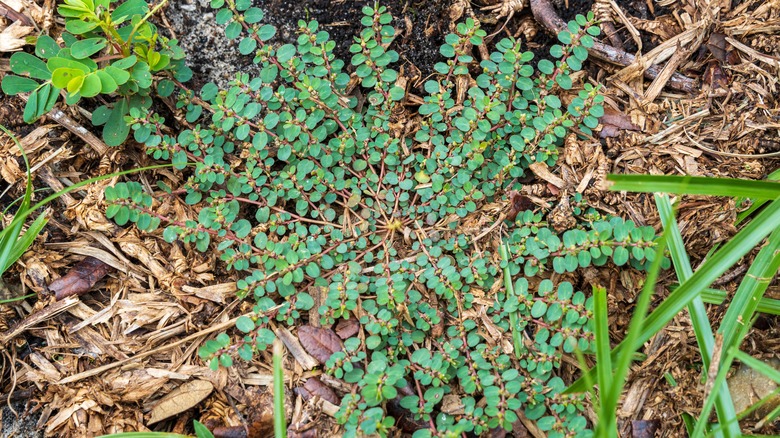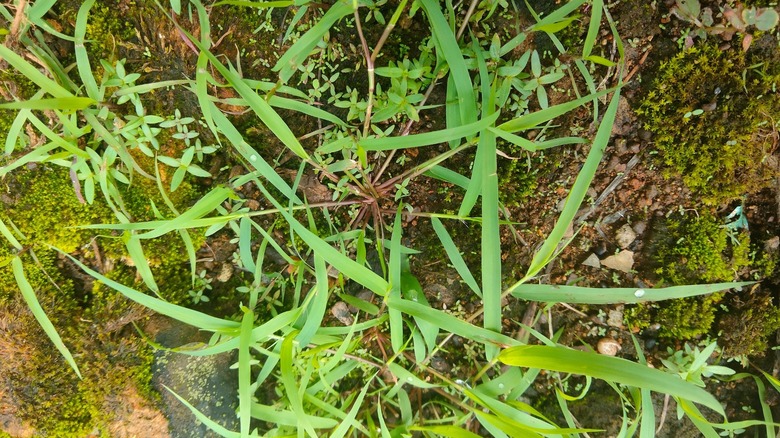The 18 Most Important Weeds To Pull In Late Summer And Early Fall
Waning summer days foretell the end of vibrant blooms and verdant turfgrasses for many a gardener. Concurrently, they unmask the numerous weeds obnoxiously choking out the desirable plants. This problem is especially precarious in ill-maintained yards, as they bolster the creation of weed seed banks that exhibit their true colors when conditions turn favorable. The weeds growing in your yard have much to say about your soil since they know firsthand when the garden is under-watered, overfertilized, compacted, and more. This means, the shoddier the care, the worse the invasive growth — equaling more painful and back-breaking redressal techniques.
Ideally, it's best to pull out the weeds immediately after they pop out of the ground, as their juvenile roots are easier to remove. But in case you missed out while waiting for the weather to play nice, don't lose hope. You can still remove certain summer weeds before they produce seeds, such as ragweed, bindweed, knotweed, and more. You might even control winter annual weeds, such as dandelion and horseweed that may have started their colonization quest early. For the best results, weed dampened soil with your gardening gloves on, as some undesirables contain toxic sap or prickles. This is also the important safety reason to keep soap with your gardening gear. Identifying the weed beforehand (apps like PictureThis and PlantStory can help) lets you know if it's an annual that only needs a once-and-done job or a perennial that will require repeated weeding.
1. Ragweed
Loved by songbirds for their oil-rich seeds and hated in equal measure by those allergic to pollen, common ragweed (Ambrosia artemisiifolia) plants have officially landed on the bad side of most gardeners. These rapid-growing, sun-loving summer weeds are quick to monopolize dry, infertile soils, outcompeting their native brethren until the frost kills them. However, hoeing them out or mowing them down before their delicate, deeply dissected foliage is adorned by unattractive copper inflorescence can keep them (and their seeds) in check. Otherwise, consider suffocating them with a 3-inch-thick mulch layer with 2,4-D applications as a last resort.
2. Cinquefoil
With more than 300 species, cinquefoil (Potentilla spp.) uses its eerie resemblance to strawberry plants to take over garden beds, especially ones with poor soils. However, you can tell the summer weed apart from its five leaflets — strawberry has three. You may be tempted to retain the yellow-flowered, pollinator-friendly plant, but it has a penchant for monopolization. Common cinquefoil is especially problematic because it sends out runners, while sulfur cinquefoil is a noxious weed with self-seeding tendencies. Hold the stem at soil level to yank out the plant. Use a weeding tool if this doesn't remove the root.
3. Curly dock
Curly dock (Rumex crispus) is an experienced hiker that spreads by wind, water, and animal fur transference — and it's an invasive perennial weed that's hard to unearth after it's established. Its summer-blooming yellow petals make way for brown seeds, capable of germinating even after 50 years. However, its deep taproot is the worst offender, necessitating hours of laborious extrication. Always try to pry curly docks out of moist soil with a spade or dandelion weeder around ½ a foot from where the stands end to minimize fragmentation. Otherwise, you'll have to start over, as the bits can regrow.
4. Hedge bindweed
Reminiscent of and often mistaken for non-invasive morning glory due to its white or pink flowers, Hedge bindweed (Calystegia sepium) is a prolific vine that wraps itself around any plant or structure it encounters. In addition to strangling, the noxious weed impedes desirable plant growth by releasing allelopathic chemicals. It further gains a foothold by boring its roots nearly 9 feet deep into the soil, unless it's waterlogged. To keep bindweed out of your garden, use a garden fork to dig out the deeply entrenched roots and repeat the process every fortnight until all reserves are exhausted.
5. Japanese knotweed
Considered invasive in over half the U.S. states, Japanese knotweed (Reynoutria japonica) is one perennial you never want in your property. Because afterward, that's all you'll ever see. It will shade your plants with its 10-foot stature and also wriggle through your foundation and walls. Smaller infestations — under 20 stems — can still be controlled by repeatedly cutting back the plant every week and sending the bits to the landfill. But if the knotweed is over 3 feet tall, mow it through the fall. It can take over three years to exterminate knotweed without chemicals — consider calling professionals.
6. Japanese stiltgrass
Often mistaken for the native Virginia cutgrass, Japanese stiltgrass (Microstegium vimineum) has garnered attention for its dubious ways of taking over garden beds and lawns. You'll most likely locate it when the silver-haired, green mat is festooned by yellow flower spikes (racemes) in summer. However, schedule manual removal late in the season to avoid stimulating new flushes. Either lightly wrest out the stiltgrass with a hori-hori knife or a scuffle garden tool, or prune it down with a mower (or an electric trimmer) before it sets seeds. Apply mulch afterward to subdue stray seeds.
7. Purple loosestrife
Given its presence in wildflower mixes and the ability to piggyback on boots, equipment, wind, and wildlife, purple loosestrife (Lythrum salicaria) has become a scourge nobody signed up for. Its commercial availability in states (where it isn't classified as noxious) only adds to the problem, as it has a history of cross-pollinating with wild loosestrife plants. Painting the landscape a brilliant mauve with flower spikes through the summer, purple loosestrife can be mistaken as an ornamental heaven-sent flower to beautify wet sites. But shoveling out all their stands along with their colonizing roots is the best way forward.
8. Tree-of-heaven
Sun, shade, poor soils, urban pollution — throw all that you can think of at a tree-of-heaven (Ailanthus altissima) and it will thrive. A fast grower, its root suckers can grow over 50 feet away from the mother tree, making them highly invasive. Worse, even a two-year-old plant can produce seeds, contributing to its spread in the tiniest spaces, including pavements. Successful control requires these plants to be pulled out, roots included, in their seedling stage; mowing will worsen the situation. But if you're dealing with suckers, repeated herbicide applications may be necessary in late summer to control their spread.
9. Common chickweed
Chickens love it — hence the name chickweed (Stellaria media). Bees, birds, and butterflies adore its flowers, while cooks appreciate its leaves as salad garnishes. Yet, the aromatic herb is labeled invasive in several U.S. states, including Virginia and Pennsylvania. Generally considered a winter annual, chickweed (Stellaria media) tends to have an early start in some regions, especially if the soils are running high on nitrogen. Pulling out the seedlings as they rear their tiny green-leaved heads in late summer to fall minimizes the possibility of them spewing trouble, considering their nearly concurrent flowering and seeding leanings.
10. Hairy bittercress
Bare garden soil or balding lawn patches often fall prey to hairy bittercress (Cardamine hirsuta), another notorious weed that treats the end of summer as a cue for its emergence. You might even find it hiding in nursery-bought container plants. Sometimes confused for dandelion, bittercress grows tiny, kidney-shaped leaves that can carpet the ground if it's allowed to set seeds come spring. That's why it's essential to ease the shallow-rooted seedlings out of the irrigated or wet ground the moment you become alert to their presence. Mulch the soil to deprive the weeds of real estate going ahead.
11. Horsetail
Having earned the distinction of being the first weed to build tolerance for glyphosate, horseweed or marestail (Erigeron canadensis) has come a long way. Relying on winds, its seeds are quick to root in fertile soils, although shade may play spoilsport. Thereon, they flower in the fall (or mid-summer under conducive conditions), readily releasing seeds to torment lawn owners next year. So, catch them early by inspecting your property for rosettes of 2-inch long, green leaves that grow progressively pointed as they age. Make sure to pull out the entire plant, as it can grow back through stem fragments.
12. Prostrate knotweed
If you're guilty of shoveling de-iced snow around the driveway or sidewalks onto your turf, you might've heaved a sigh of relief when it greened up in spring. However, odds are what grew back isn't grass, but prostrate knotweed (Polygonum aviculare). Sadly, you wouldn't know that until after mid-summer. While the best time to weed out prostrate knotweed is early summer, you still have a chance to control its growth late into the season, so long you can prevent the summer-through-fall bloomer from dispelling seeds. Simultaneously, work on improving your lawn's compaction and nutrient levels.
13. Dandelions
Someone's treasure is another's weed and dandelions (Taraxacum officinale) know this all too well. While there are benefits to having some dandelions on your lawn, as they loosen compacted soils, provision bees, and brighten the vista with their puffy flowerheads, the aggressive growers are quick to suffocate turfgrass and desirable plants when left unchecked. Depending on the region, they flower throughout the year or at least until fall, uncharitably tossing seeds and thus, calling for their banishment. Pull out the weed from rained-on soil by hand or a tool. Don't leave behind any taproot vestiges, or it will return.
14. Field pennycress
A combination of moisture, low nutrients, clay or loamy soil, and full sun will leave your garden beds swathed in field pennycress (Thlaspi arvense). Their seeds usually germinate into 6-inch-tall leafy rosettes in the fall, which are much easier to rid of — provided they're identified timely. However, there may be instances during the summer when you will find the weeds growing as branched stems without undergoing the rosette stage. Aim to hand weed the plant or its four-petaled white flowers drop their pods, releasing thousands of seeds prime for germination in the next five years.
15. Prickly lettuce
Prickly lettuce (Lactuca serriola) can pose weedy problems in damp garden sites by rearing out its basal rosettes anytime between mid-summer and fall end. Usually an annual (rarely a biennial), the lettuce plants establish their colonies through their seeds that piggyback on their white fluff to drift to greener pastures. Hence, prying out the weeds before their pods mature is a good tactic to keep the nuisance at bay. Also, ensure the garden beds are densely packed so that the seeds have no leeway to emerge; they can remain viable for three years.
16. Shepherd's purse
Tree beds, deer-frequented yards, and newly established turf may experience the notoriety of shepherd's purse (Capsella bursa-pastoris) year-round if the cool-season weed is left to its own devices. Shepherd's purse seedlings begin flowering early, releasing many seeds in successive sessions in a single year, depriving the gardeners of a breather. Luckily, they root at the surface level, which makes pulling them out a breeze, unless the dirt is heavily compacted. Alternatively, you can slice their taproot with a garden tool to fully exterminate their presence and compost the dead plants, unless they've produced seeds.
17. Spotted spurge
When spotted spurge (Euphorbia maculata) has a good summer, it takes over thinning lawns and gardens as well as the cracks in gravel walkways. So strong is their zeal to advance that even their youngest disseminate seeds, provided it's 75 degrees Fahrenheit and moisture is plenty. Alas, you won't notice their presence or them driving their taproot 2 feet underground until they're closer to being killed by frost than at your hands. But if you do, poke out the plants — hopefully, before they've fashioned their seeds — and spread a 2-inch thick mulch layer to bury their viable seeds.
18. Nimblewill
Popular as a warm-season grass alternative in the southern states, nimblewill (Muhlenbergia schreberi) has come under disrepute in cool-season lawns. That's because it tries to gain new territory when the turf is drought- and heat-stressed in the summer. It also appears unsightly with its coarse, silverish-green blades and oat-like spikes, especially when juxtaposed with the fine-textured lawn. Luckily, nimblewill doesn't establish itself deeply and can easily be heaved out with your bare hands. Just ensure no bits are left behind, or it won't think twice about sprawling all over again.
